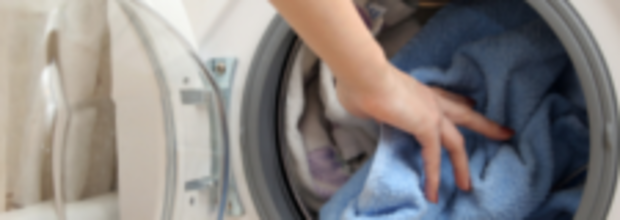Cash for Appliances: How to Cash In
Can an appliance rebate program do for dishwashers what the 2009 version did for the Ford Focus? In shopping malls and hardware stores across the land, the government is rolling out "Cash for Clunker Appliances," an attempt to get you to spend madly on energy-efficient white goods, thereby saving both the economy and the environment. The federal Energy Star rebate program will hand out $50 to $250 apiece for certain types of appliances if you replace old energy gobblers with more efficient models. So if you've put off replacing your rattling washing machine, you may want to cash in, assuming you can. (More on that in a moment.)
Under the federal program, the rebates can go to buyers of new central air conditioners, room air conditioners, heat pumps, boilers, furnaces, washers, dishwashers, freezers, refrigerators, and water heaters with the Energy Star seal. (That’s the somewhat discredited label noting that a product meets federal energy efficiency guidelines. Some energy-use figures on the labels don’t reflect typical usage or haven’t been independently verified.)
Unlike the car program, it doesn’t matter how old your clunker appliance is, it needn’t be in working order and, in some states, such as Arizona and Florida, you won’t even need to trade it in. Major retailers are participating, as are many smaller local dealers. Some big players, such as Sears and Home Depot, are promoting the program through e-mail updates that provide details on your state’s plan. Appliance makers, including Maytag and GE, have information on their sites about their qualifying products.
State by State
- Energy Star appliances can cost $50 to $100 more, on average, than ones that don’t. But the appliance should pay for itself over five or six years through savings on your utility bill. In some cases, your savings come faster. Replacing a washer made before 2000 with a new Energy Star model, for example, can save up to $135 a year, according to the Department of Energy.
- Only 55 percent of new major appliances have the Energy Star label. So you might not be able to get the rebate on the product you want to buy.
- You might not actually get cash. Although some states will issue rebate checks, many will instead give out prepaid cards issued by Visa or MasterCard.
- Unlike “Cash for Clunkers,” where dealers handled all the paperwork, in most states you have to deal with the forms to get your rebate. That means mailing in your receipt, along with proof of residency, a rebate form from the retailer or your state energy department web site, and usually proof that your clunker appliance was picked up.
- It’ll take roughly four to six weeks to get the rebate.
Unlike “Cash for Clunkers,” however, this program has wildly varying rules from state to state.
Each state will run its program differently, deciding which of the possible products it will include in the program, when to start and stop offering rebates, the size of the rebates, and which residents will qualify. In Minnesota, for instance, only washers, dishwashers, freezers and refrigerators are covered. The refrigerator rebate is worth up to $100 in Nebraska, but no more than $50 in Georgia. The Alaskan program is limited to residents receiving disability payments from the state or federal government. In Kansas and Oregon, rebates are restricted to low-income people. States have until February 2012 to allocate their rebate money, but the programs will likely expire long before then. Some will last only a week.
Eight states (Connecticut, Delaware, Illinois, Kansas, New Jersey, Oregon, Vermont and Wisconsin) have launched their appliance programs, at least for some products, to capitalize on President’s Weekend appliance sales. The rest are likely to rev up by May, many around Earth Day in April. You can find the rules for your state’s program at Energy Star Web site.
Now for the fine print:
Take Advantage
Still game? Follow these six tips to get in on the action:
1. Drill down into the details of your state’s plan. Some states have rigorous requirements about which products qualify, beyond the Energy Star stamp.
Others are rolling out their programs in two phases.
Minnesota and Texas let consumers reserve rebates online or by calling a toll-free number about two weeks before they buy. Check online to see if your state has rebate funds left. Some state sites provide an up-to-date tally of the amount left in the kitty.
2. Make sure the retailer you plan to visit is participating. Some small dealers are sitting out because they’ve decided the program is too costly. In Georgia, online purchases won’t qualify.
3. Learn the precise rebate amount for the appliance you’ll buy. You may encounter unexpected twists. In New York’s “Great Appliance Swap-Out,” consumers get rebates for buying eligible appliances individually or in a bundle of three, where the rebate may be larger.
4. See if you’ll get a recycling bonus. Some states boost the rebate by $25 to $75 if you recycle your old appliance.
5. Ask about additional deals. There’s a good chance your new appliance is also eligible for a manufacturer’s rebate or store promotion, too. You may also be able to combine a state rebate with the federal one. Call your local utility to see if it is dangling rebates, too. Often, utilities offer $50 off new energy-conserving appliances. The Database of State Incentives for Renewables & Efficiency is a good place to do your research.
6. Apply for the rebate as soon as you can. Some retailers have in-store computer kiosks where customers can apply for rebates on the spot. In Georgia and New York, as soon as you’ve bought a qualifying appliance, you can reserve a rebate either online or by calling a toll-free number. Since states will halt their programs when their money runs out, you won’t want to conserve your energy when it comes to applying for rebates.
More on MoneyWatch:
